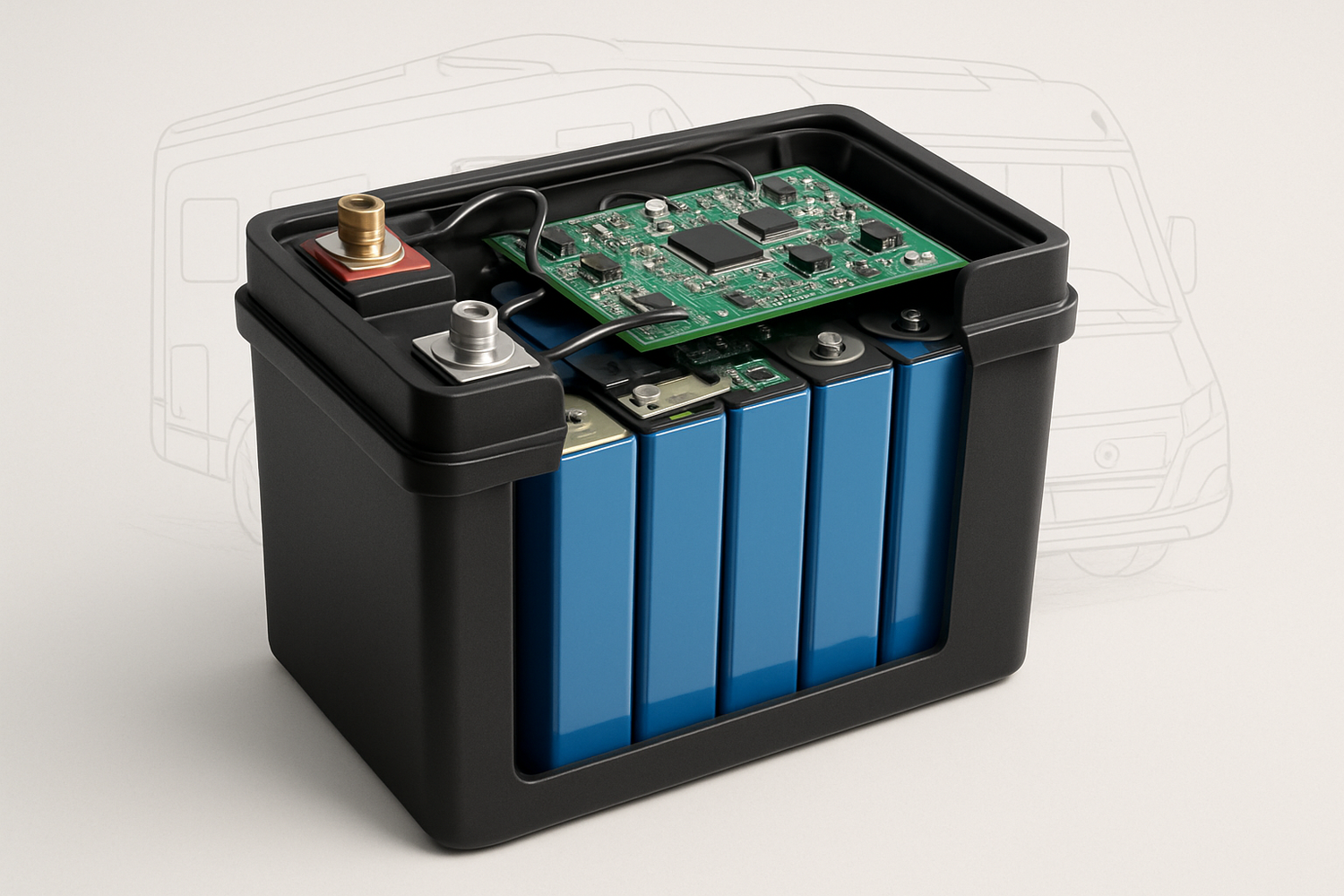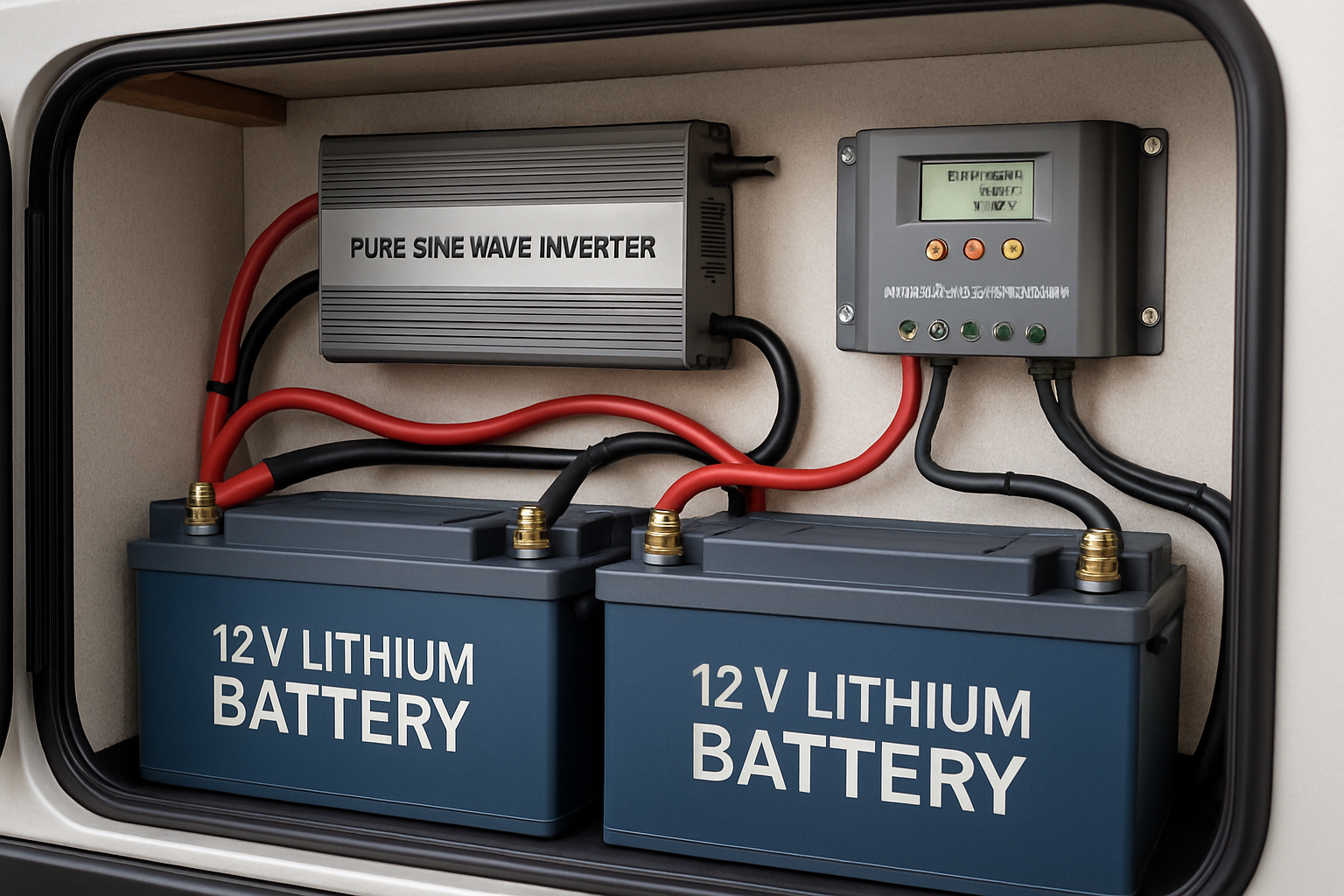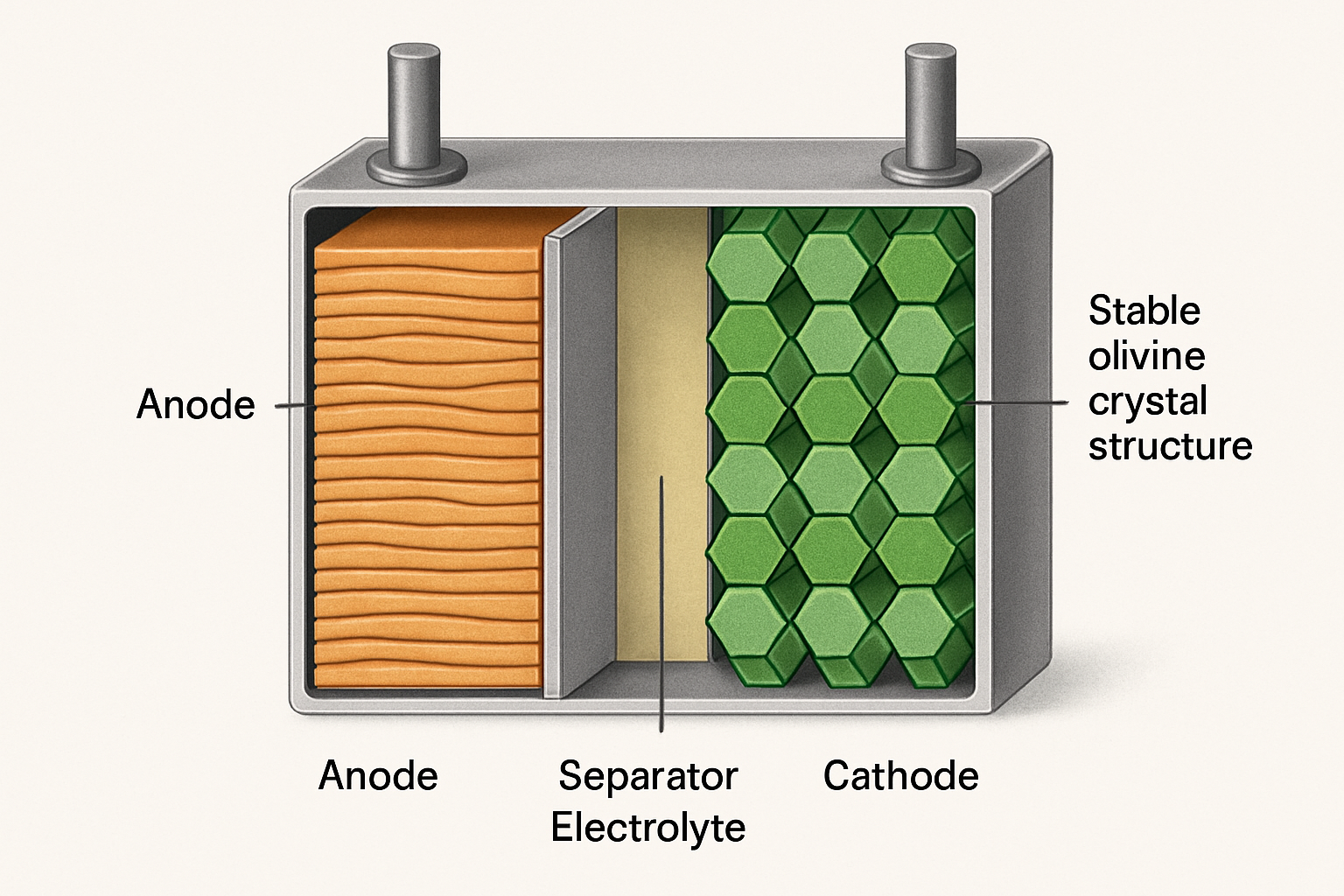Modern recreational vehicles demand more from their power systems than ever before. From running appliances to keeping devices charged, a reliable source of energy is essential for a comfortable and independent travel experience. In recent years, 12V LiFePO4 (Lithium Iron Phosphate) batteries have emerged as a superior power solution, offering significant advantages over traditional lead-acid batteries. Upgrading your RV's battery is a major step, and this guide provides a clear roadmap to understanding LiFePO4 technology, its benefits, and what to consider for a successful switch.
Understanding the Core of LiFePO4 Technology
The growing adoption of battery storage is a key component of the global shift towards cleaner energy. The technology inside these batteries is what makes them so effective for RV applications.
What Sets LiFePO4 Apart?
LiFePO4 is a specific type of lithium-ion battery chemistry known for its exceptional stability and safety. Unlike the lithium chemistries found in some electric vehicles or consumer electronics, the iron phosphate-based cathode material is not prone to overheating or thermal runaway, making it an inherently safe choice for the confined spaces of an RV. This chemical stability is a primary reason LiFePO4 has become the standard for demanding applications where safety and longevity are paramount. According to a report from the International Renewable Energy Agency (IRENA), there's a notable shift towards LiFePO4 chemistries in energy storage, driven by their lower costs, longer cycle life, and better security.
The Role of the Battery Management System (BMS)
Every high-quality 12V LiFePO4 battery contains an integrated Battery Management System, or BMS. This electronic circuit is the brain of the battery, constantly monitoring its health and ensuring safe operation. A BMS protects the battery cells from common issues that can cause damage, such as over-charging, over-discharging, excessive current, and extreme temperatures. It also balances the charge across all the cells, which is crucial for maximizing the battery's lifespan and maintaining its performance over thousands of cycles.
Performance Advantages of LiFePO4 Batteries in an RV
The practical benefits of upgrading to a 12V LiFePO4 battery are noticeable from day one. They outperform lead-acid batteries in nearly every metric relevant to RVers.
Superior Lifespan and Cycle Count
One of the most compelling reasons to switch is longevity. A LiFePO4 battery can typically deliver between 3,000 and 5,000 charge cycles, and sometimes more, whereas a traditional lead-acid battery may only last for 300 to 500 cycles. This means a single lithium battery can last more than 10 years, potentially outlasting several sets of lead-acid batteries. This durability makes them a sound long-term investment.
Consistent Power Delivery and Depth of Discharge (DoD)
LiFePO4 batteries provide a stable voltage output throughout most of their discharge cycle. This means your lights won't dim and appliances will run consistently, even as the battery's charge level decreases. Furthermore, they can be safely discharged to 80-100% of their capacity without suffering damage. In contrast, lead-acid batteries should only be discharged to about 50% to avoid significantly shortening their lifespan. This high usable capacity, or Depth of Discharge (DoD), means a 100Ah LiFePO4 battery provides nearly double the usable power of a 100Ah lead-acid battery. Understanding these solar storage performance metrics is key to appreciating the real-world difference in capacity.
Weight Reduction and Efficiency
Weight is a critical factor in any RV. LiFePO4 batteries typically weigh about half as much as their lead-acid counterparts of the same capacity. This significant weight reduction can improve your RV's fuel efficiency and free up valuable payload capacity for other gear. Additionally, they are more efficient, wasting less energy during charging and discharging cycles. This is especially beneficial when charging with solar panels, as more of the captured energy is stored and available for use.
Key Considerations for Your RV Battery Upgrade
Switching to a 12V LiFePO4 battery is more than a simple swap. To get the most out of your investment, you need to ensure your entire system is properly configured.
Sizing Your Battery Bank Correctly
Before purchasing, it's vital to conduct an energy audit to understand your daily power consumption. Calculate the energy needs of all your appliances, from the refrigerator and lights to inverters and device chargers. This will help you determine the appropriate Amp-hour (Ah) capacity for your battery bank, ensuring you have enough power for your typical usage, especially for off-grid camping.
Charging System Compatibility
Your RV's existing charging systems may need to be updated. The converter/charger, which powers your 12V system and charges the battery when plugged into shore power, should have a specific lithium charging profile. Likewise, your solar charge controller must be compatible with LiFePO4 batteries to ensure proper charging. If you charge from your vehicle's alternator while driving, a DC-to-DC charger is often recommended to protect both the battery and the alternator.
Evaluating Temperature Performance
LiFePO4 batteries can be safely discharged over a wide range of temperatures. However, charging them in below-freezing conditions (0°C or 32°F) can cause permanent damage. For this reason, many premium 12V LiFePO4 batteries include a BMS with a low-temperature charging cutoff. If you frequently camp in cold weather, consider a battery with a built-in heating element that allows for safe charging in freezing temperatures.
Making a Smart Investment
While the initial price of a LiFePO4 battery is higher than a lead-acid battery, its long-term value is undeniable.
Analyzing the Total Cost of Ownership
The true cost of a battery system should be evaluated over its entire lifespan. A LiFePO4 battery's extended cycle life means you won't face replacement costs every few years. When you factor in the greater usable capacity, higher efficiency, and lack of maintenance, the total cost of ownership for LiFePO4 is often significantly lower than for lead-acid alternatives.
| Feature | 12V 100Ah LiFePO4 | 12V 100Ah AGM Lead-Acid |
|---|---|---|
| Upfront Cost (Estimate) | $300 - $500 | $150 - $250 |
| Lifespan (Cycles) | 3,000 - 5,000+ | 300 - 500 |
| Usable Capacity | ~90-100Ah | ~50Ah |
| Replacements Over 10 Years | 0 | 2-3 |
| Total Cost Over 10 Years | $300 - $500 | $450 - $750+ |
Disclaimer: This table provides an illustrative comparison. Actual costs and lifespan may vary based on brand, usage, and maintenance. This information does not constitute financial advice.
Safety Features to Look For
When selecting a battery, prioritize those with a robust BMS that offers comprehensive protections. Look for certifications such as UL or CE, which indicate the battery has been tested to meet rigorous safety standards. The inherent stability of LiFePO4 chemistry, combined with a quality BMS, makes it an exceptionally safe and reliable choice for your RV.
A Smarter Power Future for Your Travels
Upgrading to a 12V LiFePO4 battery system is an investment in freedom and reliability for your RV adventures. The extended lifespan, consistent performance, and significant weight savings provide tangible benefits on the road. By carefully assessing your power needs and ensuring system compatibility, you can equip your RV with a modern, efficient, and long-lasting energy solution that will power your travels for years to come. The versatility and falling costs of batteries are transforming energy use in both transport and power sectors, as highlighted in reports by the International Energy Agency.
Frequently Asked Questions
Can I replace my lead-acid RV battery directly with a LiFePO4 battery?
In many cases, yes, but it's crucial to check compatibility with your RV's charging system. Your converter, alternator, and solar charge controller may need to be adjusted or upgraded to a model with a lithium-specific charging profile to ensure optimal performance and longevity.
Do LiFePO4 batteries require maintenance?
No, one of the significant advantages of 12V LiFePO4 batteries is that they are virtually maintenance-free. They do not require watering, and there is no need to clean terminals due to corrosion, unlike traditional lead-acid batteries.
How long will a 12V LiFePO4 battery last?
A high-quality LiFePO4 battery can last for 3,000 to 5,000 charge cycles or more, which often translates to over 10 years of reliable use in an RV. This is substantially longer than the 2-5 year lifespan typical of lead-acid batteries.
Are LiFePO4 batteries safe for use in an RV?
Yes, LiFePO4 chemistry is one of the safest and most stable lithium-ion technologies available. They are not prone to thermal runaway. A properly installed battery with an integrated Battery Management System (BMS) is a very safe power source for an RV.





Leave a comment
All comments are moderated before being published.
This site is protected by hCaptcha and the hCaptcha Privacy Policy and Terms of Service apply.